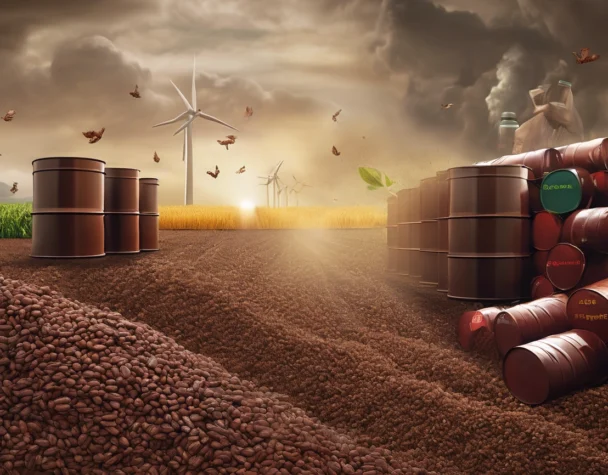
Tariff Truce, Cocoa Shortages, and Energy Shifts Reshape Commodity Trends
Tue, May 13, 2025Oil Prices Rebound While OPEC+ Faces Strategy Fractures
Energy markets surged following the recent 90-day tariff truce between the U.S. and China, which offered a brief reprieve from escalating trade tensions. Brent crude rose 3.8% to $66.34 per barrel, as traders priced in improved demand prospects amid smoother trade flows. The Russian central bank also forecasted stabilization around $60 per barrel for the remainder of the year, citing expectations of stronger global consumption as barriers fall. (Reuters)
However, behind the bullish price action lies a brewing concern. OPEC+, led by Saudi Arabia, has shifted away from aggressive production cuts after member non-compliance reportedly diluted prior agreements. Riyadh’s strategic pivot to boost output suggests internal discord and reduced effectiveness of coordinated supply management. Analysts warn that this shift could cap further price gains despite improving macro sentiment.
While short-term bullishness prevails due to eased geopolitical headwinds, volatility may persist as OPEC+ cohesion falters and U.S. energy policy evolves heading into the 2025 election cycle.
Cocoa Skyrockets, Pulp Tariffs Threaten U.S. Retail Supply Chains
In the agricultural space, cocoa prices have hit record-breaking highs—surpassing $10,000 per tonne in New York—driven by extreme weather conditions and disease outbreaks in West Africa, the world’s largest cocoa-producing region. This “cocoa crisis” has not only rattled the confectionery sector but also reignited concerns about climate resilience in agricultural exports. (Wikipedia)
Meanwhile, U.S. tariffs on Brazilian pulp have triggered a sharp 20% decline in imports, raising fears of a toilet paper shortage reminiscent of early pandemic supply crunches. The potential shortage of hygiene products has begun to impact major retailers, with price increases and delivery delays looming. (New York Post)
These developments underscore the fragility of global supply chains and the risks of trade protectionism during inflation-sensitive periods. While the 90-day U.S.-China tariff reprieve has softened some immediate trade costs, targeted tariffs on other nations continue to create localized disruptions.
Conclusion
Commodities across energy, agriculture, and metals are navigating an environment shaped by both macro and micro-level shocks. From OPEC+ policy splits to climate-driven crop failures, the asset class remains volatile. While the short-term outlook is buoyed by improving trade conditions, lasting stability will depend on sustained policy coordination and supply resilience.
Investors should stay alert to political developments and emerging supply chain stress points that could significantly alter pricing dynamics in the second half of 2025.

